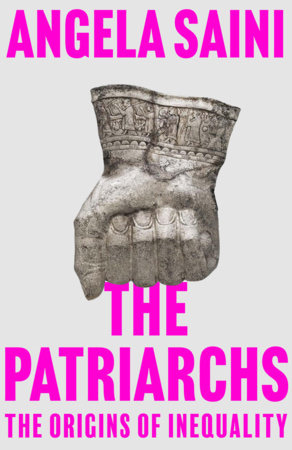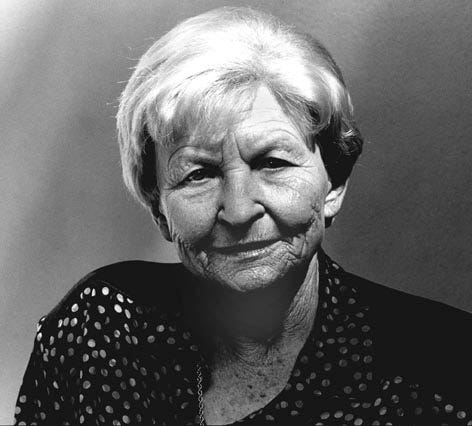Book Review -- The patriarchy: who wants it, who needs it?
In a new book, acclaimed science journalist Angela Saini searches for the origins of patriarchy. Her conclusions might be surprising.
I’m not sure how far I got through British science journalist Angela Saini’s new book, “The Patriarchs: The Origins of Inequality,” before I realized that she wasn’t actually going to pinpoint any singular (or simple) explanation for why patriarchies exist. I did know she wasn’t going to argue that the dominance of men in most modern societies was due to biological differences: Saini had skewered that idea, and any suggestions that science supported it, in her earlier book “Inferior: How Science Got Women Wrong—and the New Research That’s Rewriting the Story.”
I should have picked up some clues about what Saini was up to in her second chapter, where she describes the theory of Friedrich Engels—one of my intellectual heroes—that oppression of women was directly tied to the exigencies of capitalist society and private property. Engels elaborated his views most thoroughly and famously in his 1884 book “The Origin of the Family, Private Property and the State.” As Saini explains, Engels was inspired by Lewis Henry Morgan’s earlier book “Ancient Society,” which had also inspired Karl Marx’s thinking about the roles of men and women in industrial societies (as always with Marx and Engels, it’s often difficult to know where the ideas of one man ended and those of the other began, the sign of a true intellectual partnership.)
In Engels’s analysis, in the course of prehistory earlier matriarchal societies had been superseded by patriarchal structures, leading to what he called “the world historical defeat of the female sex.” As Saini writes, these words “would ring through feminist literature for the next century or more….Engels’s narrative was as stirring as it was dramatic” when he described how the rise of the patriarchy had turned women into the property of men. In the patriarchal family, Engels wrote, “the woman was degraded and reduced to servitude, she became the slave of his lust and a mere instrument for the production of children.”
Stirring stuff indeed, and a clear battle cry for women to break their chains. “Engels’s theory seemed to tie everything together,” Saini tells us. “It was easy to get swept away by its argument… But the theory also had a fundamental problem.”
The problem, Saini writes, paraphrasing the anthropologist Adam Kuper, is that “human societies don’t all necessarily trace back to one single point, to a time when everyone lived the same way.” Nevertheless, for at least another few chapters I thought Saini was going to find a common thread that would explain patriarchal societies today, including those in the so-called industrialized West. I was wrong, and I should have known that she would not take something so complicated and try to make it simple.
At this point in my review it’s time for full disclosure: Angela Saini is a good friend of mine (so I am going to call her by her first name from now on) and I am a big fan of hers. I first got to know her when she asked me to do a jacket endorsement for her last book, published in 2019, “Superior: The Return of Race Science.” Just as Angela had, in “Inferior,” skewered mistaken ideas that men were biologically inferior to women, in “Superior” she eviscerated notions that whites were superior to other “races” (and showed, as others have, that the whole concept of race is a social construct and not a biological reality.)
“Superior” is not the only book that treats this topic, but in my view it is the best. I explained why in my jacket blurb:
“Some writers have tackled the sordid history of race science previously, but none have gone so deep under the skin of the subject as Angela Saini in Superior. In her deceptively relaxed writing style, Saini patiently leads readers through the intellectual minefields of ‘scientific’ racism. She plainly exposes the conscious and unconscious biases that have led even some of our most illustrious scientists astray.”
Indeed, one of the pleasures of reading Angela’s books is that she does not rush to get to the point, a flaw of many writers who lack confidence in what they are saying.
Now back to the book, because the next chapter is one very close to my heart. By warning us that Engels’s analysis was too simplistic, Angela also signaled—for those with open minds—that traditional “instrumentalist” and “structuralist” explanations for how our societies are organized were not going to do the job. (Forgive me if I ask readers who are not familiar with these terms to look up their definitions. Marxism has gone through both instrumentalist and structuralist phases, which to me shows it is a flexible enough view of the world to encompass a wide variety of analyses.)
In Chapter 3, called “Genesis,” Angela travels to the extensive archaeological remains of Neolithic Çatalhöyük in Turkey, not far from the city of Konya (home of the whirling dervishes, among other things.) Settled about 9500 years ago and occupied for more than a millennium by thousands of people, this early farming village (sometimes erroneously called “the first city”) was first excavated by the British archaeologist James Mellaart in the 1960s, and later by another British archaeologist and archaeological theorist, Ian Hodder (now at Stanford University.)
I made many visits to Çatalhöyük myself between 1998 and 2005, first on assignment for Science magazine and then to write a book about the site and its history, “The Goddess and the Bull” (still in print after nearly 20 years, I’m proud to say.) (See also a piece I wrote for Smithsonian which dealt with how the site informs us about the so-called Neolithic transition from hunter-gathering to farming.)
For Angela’s purposes, however, Çatalhöyük is important for what it might tell us about the roles of men and women in prehistory. She spends a lot of time talking with Ian Hodder about it. And the answer appears to be that, at least in these early days of settled farming life, men and women were pretty much equal.
That conclusion did not come immediately to scholars, however, as Angela points out. Çatalhöyük is probably most famous for a figurine that Mellaart discovered, depicting a large woman sitting on a (chair, throne?) with her hands on the heads of what appear to be two leopards (leopard imagery is found elsewhere at the site, for example in its equally famous wall paintings.)
The flamboyant James Mellaart (whom I knew well before his death in 2012) convinced himself and many others that Çatalhöyük was a site of Mother Goddess worship, based on this and other female figurines found at the site. Hodder got into a lot of trouble (and so did I after my book was published, the evidence is still among the Amazon reviews) when he and his team began to diss the Mother Goddess idea, for a variety of reasons I will not get into here but which Angela discusses in her book.
The bottom line is that Hodder did not find any evidence for either male or female dominance at the village, preferring interpretations that stressed equality of the sexes and fluidity of gender roles (for an accessible account of his views, see this 2005 article in Scientific American, “Women and Men at Çatalhöyük.”) This runs counter to the idea that patriarchy had its origins in agriculture and settled life during the Neolithic revolution.
But what about later, as time went on?
In the following chapter, entitled “Destruction,” Angela moves her narrative westwards, to Copper and Bronze Age Europe, and traces what some archeologists have concluded is evidence that once matriarchal societies were swept away by hordes of horse-riding, patriarchal chieftains and their followers. This dramatic picture, often called the Kurgan hypothesis (after the burial mounds the supposedly fierce chieftains were buried in) and most closely identified with the late archaeologist Marija Gimbutas, has gone in and out of style over the years; but more recently, it is back in style, at least the notion of mass migrations across Europe, thanks to ancient DNA research and tracing of population movements using genetic markers found in prehistoric skeletons.
I am oversimplifying greatly what Angela discusses here, something that she does not herself do: Again, she captures the nuances of the evidence with great skill. This is an area I have written about myself, especially the implications for the spread of the large Indo-European language family (see here and here for a couple of my own contributions to this literature.) The Kurgan hypothesis, which traces the origins of Indo-European languages (which include English, most European languages, and even Sanskrit) to this supposed patriarchal sweep, was challenged beginning in the late 1980s by the British archaeological Colin Renfrew, who counterposed what he and others called the “Anatolian hypothesis”—the supposition that the Indo-European languages were born several thousand years earlier during the Anatolian Neolithic.
In other words, at places like Neolithic Çatalhöyük, which was a major population center. I must admit I felt chuffed every time I visited the site and imagined that the language I speak got its start right under my feet. And I have known Renfrew since the late 1990s, although I had not spoken with him since the beginning of the pandemic. Thus it was surprise to read, in Angela’s interviews with him, that Renfrew has come to accept the later migrations depicted in the Kurgan hypothesis. That should not be a surprise, as Renfrew is a big fan of the ancient DNA work that seems to have confirmed them at least in part.
As for whether the Indo-European language family moved across Europe together with the Kurgan patriarchs, Angela tells me from her interviews that he may not be ready to concede that point. And in the book, she quotes Ian Hodder with a cautionary note about tying genes and culture too closely together. “I think that’s wrong,” Hodder told her.
As she comes to the end of her discussion of Gimbutas, the Kurgans, and horse-riding patriarchs, Angela sounds her own caution bell about reading too much into the evidence:
“Again, I have to stop myself from getting swept away by the dramatic story-lines offered by those I speak to. The lives of everyday people in the past are unlikely to have been quite as one-dimensional as the grand narratives are. This is real life, after all.”
Indeed, as Angela moves forward in history, any grand narratives begin to fall apart. Sure, patriarchies have their day and their say, but there is constant pushback from women, who often achieve considerable power and prestige of their own—in Mesopotamia, in ancient Greece, in Egypt and elsewhere in the so-called Middle East. And by the time we reach the modern era, experiments in equality between men and women—some long-lasting, as in the former Soviet Union—demonstrate that if patriarchy is a hard-core feature of industrial societies, a lot of women didn’t get the message.
In our own day, the rise (or should we say resurrection) of feminist movements again belies any conventional wisdom about gender roles. “The question that hangs over us in the twentieth-century is how patriarchy manages to survive in the face of resistance,” Angela writes.
Only in the book’s Afterword does Angela explicitly touch on what I and many other leftists think about when we think of patriarchy: The way that it uses “divide and rule” to keep men and women from uniting in a common fight against the rich and powerful, what back in the 1960s we used to call “the ruling class” (which I think is still an apt term, even if the ruling class never was as monolithic as we imagined.)
On the next to last page, Angela gives a brief critique of the shortcomings of the feminist movement in addressing these class divisions, which all good Marxists insist are more fundamental than those between men and women, as well as between the “races.”
“Faced with a task this monumental,” Angela writes, “the fight for our equality can feel like a war of attrition. I myself have spoken at law firms and banks to women who want to know how they can move up the corporate ladder in sexist work environments, all the while oblivious to those cleaning up their offices after them for subsistence wages.”
So in the end, Angela does not land on an overarching explanation for the origins of patriarchies. Since that conflicted with my own assumptions and Marxist tendencies, I emailed her to make sure I understood what she was up to. Indeed, I had. Here is what she said:
“Yes, you're right, I felt I couldn't land on anything other than the conclusion that this is a precarious form of oppression that doesn't have one single cause or mechanism, just lots of factors depending on the time and place that in concert give the impression of something more monolithic, conspiratorial and timeless.”
And it suddenly dawned on me that this might explain how the patriarchy justifies itself and retains its power, despite the lack of any good reasons why it should do so. In essence, the patriarchy (or should I say, The Patriarchs) have gaslighted us into thinking that male supremacy is timeless, even if there is no biological, cultural, or historical imperative behind that notion—just smoke and mirrors, down through the ages.
(I might find this conclusion easier to accept than some other socialists. See the review of “The Patriarchs” in Socialist Worker for a perspective that accepts Angela’s evidence but not all of her conclusions.)
Before closing, I want to mention, in no doubt anticlimactic fashion, another book I have been reading. It’s Richard Reeves’s latest, “Of Men and Boys: Why the Modern Male is Struggling, Why it Matters, and What to Do About It.”
This book is controversial, for obvious reasons: At a time when women continue to be subject to abuse of all kinds, including on social media when they simply try to express their views, it’s hard to be immediately sympathetic with men and boys who may be struggling in our modern culture. And I do think Reeves sometimes gives short shrift to the oppression of women, even as he often acknowledges the difficult conditions that women are subject to.
But reading Reeves’s book, one thing becomes clear from the mass of data he has collected: Sexism and misogyny are not doing much for most men. Any notions that they benefit from these toxic ideas—at least in the long run—are badly misguided. (And, I might add, only help the ruling class.)
Reading Reeves’s book, I am immediately reminded of the powerful arguments made by Heather McGhee in her recent book about race, “The Sum of Us: What Racism Costs Everyone and How We Can Prosper Together.” If a Black woman scholar insists that racism is bad for both whites and people of color, I pay attention—and I think we all should.
So even though Angela does not think the evidence supports Engels’s idea that the patriarchy is an inevitable feature of modern industrial capitalism, in the end her book provides strong support for the conviction that we don’t have to wait for the revolutionary overthrow of the capitalist ruling class to do something about it.
The dominance of men over women is not in our destiny, not in our stars, and we can do something about it as soon as we are really, seriously ready. As Angela puts it:
“We cooked it up, almost all of it, and we can invent something else. There are no natural limits to how we make the future; only our imaginations and our courage.”









This is a really good interview of Angela Saini on her new book:
https://www.chathamhouse.org/publications/the-world-today/2023-02/interview-angela-saini-patriarchy
IDK but I think the role that parasites and diseases (STDs particularly) played when we were forced to restructure our social relationships while transitioning from hunter-gatherer, low pop densities to sedentary agriculture, high pop densities lifestyles is generally underestimated. One could be speculating that the introduction of patriarchy was just one (adaptive?) way of dealing with this emerging threat to population health and even population persistence.
From my reading of your review it seems this topic is not covered in the book (but it might). btw I have read the two previous books by Angela Saini and defo also will look into the new one. Thanks for the review!